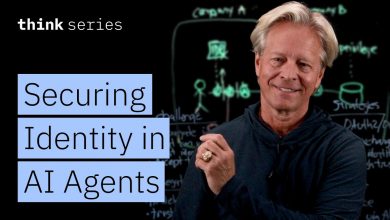 In an era where cyber threats evolve at an unprecedented pace, the Cybersecurity Operations Center (SOC) stands as the frontline defense against a relentless tide of attacks.
In an era where cyber threats evolve at an unprecedented pace, the Cybersecurity Operations Center (SOC) stands as the frontline defense against a relentless tide of attacks.
From sophisticated ransomware to AI-driven phishing campaigns, the complexity and scale of modern threats demand a transformation in how SOCs operate.
Enter Artificial Intelligence (AI)—a game-changer that is redefining the art and science of cybersecurity.
This book explores the profound impact of AI on SOCs, illuminating how it empowers defenders with unparalleled capabilities while introducing new challenges that must be navigated with care.
Real-Time Analysis and Monitoring
AI’s ability to analyze vast datasets in real time, detect anomalies with precision, and automate responses has revolutionized threat detection and incident response. Predictive analytics and behavioral modeling enable SOCs to anticipate attacks before they materialize, while intelligent orchestration streamlines operations, freeing analysts to focus on strategic decision-making.
Yet, the rise of AI also brings complexities: adversaries wield AI to craft advanced attacks, from polymorphic malware to deepfake-driven social engineering, testing the limits of even the most sophisticated defenses. Alongside these threats, SOCs grapple with data privacy concerns, skill gaps, and the risk of over-reliance on automated systems.
Through real-world examples, expert insights, and forward-looking analysis, this book unpacks the dual-edged sword of AI in cybersecurity. It examines how SOCs can harness AI to stay ahead of attackers while addressing the ethical, technical, and operational hurdles that accompany its adoption.
From Manual Mayhem to AI-Powered SOC
Whether you are a cybersecurity professional, a technology leader, or simply curious about the future of digital defense, this journey into the AI-driven SOC will equip you with a deeper understanding of the tools, trends, and strategies shaping the battle for a secure digital world.
Recent advancements in AI are significantly shaping the cybersecurity landscape, offering innovative solutions to combat increasingly sophisticated threats.
- Enhanced Threat Detection and Response: AI is improving threat detection by analyzing vast datasets in real time to identify patterns and anomalies that signal potential cyberattacks. Advanced algorithms can detect complex threats—like polymorphic malware, which evolves to evade detection—that traditional methods might miss. AI-driven systems, such as those from companies like SentinelOne and IBM QRadar SIEM, provide autonomous identification, containment, and response to threats across the entire attack lifecycle, reducing response times significantly.
- Automated Incident Response: AI is streamlining incident management by automating responses to security breaches. This includes isolating threats, generating incident summaries, and applying fixes without human intervention, as seen in platforms like CrowdStrike Falcon and Darktrace’s Enterprise Immune System. Automation reduces downtime and allows security teams to focus on strategic tasks, with some systems cutting alert investigation times by over 50%.
- Predictive Analytics: Leveraging machine learning and deep learning, AI systems predict emerging threats by learning from historical data and current trends. Tools like Microsoft’s Cyber Signals program analyze trillions of security signals daily to provide actionable intelligence, helping organizations preempt attacks such as phishing campaigns or zero-day exploits.
- Behavioral Analytics: AI-powered user and entity behavior analytics (UEBA) establish baselines of normal activity and flag deviations—like unusual data access or transmission spikes—that could indicate insider threats or compromised systems. Companies like Obsidian Security and Sophos use this to enhance endpoint and network protection.
- AI in Cloud Security: As enterprises shift to cloud environments, AI innovations are bolstering cloud security by monitoring for suspicious activities and ensuring compliance. Next-generation firewalls (NGFWs) with AI capabilities, such as deep packet inspection and API protection, are becoming standard, as highlighted in posts on X and supported by solutions from Check Point.
- Countering AI-Powered Attacks: With cybercriminals using AI to automate phishing, crack passwords faster, and create adaptive malware, defensive AI is evolving to fight back. Innovations include AI-driven email filters (e.g., Tessian) that detect spear phishing in real time and penetration testing tools that proactively identify vulnerabilities before exploitation.
- Scalability and Adaptation: AI systems are designed to scale across complex, hybrid networks and adapt to new threats dynamically. This continuous learning capability, seen in Darktrace and SparkCognition solutions, ensures protection remains effective as digital infrastructures grow and evolve.
These innovations reflect a dual-edged reality: while AI strengthens cybersecurity defenses, it also empowers attackers, intensifying the ongoing arms race. Enterprises are increasingly adopting these AI tools to stay ahead, with the global AI cybersecurity market projected to grow substantially, driven by the need for faster, more accurate, and scalable security solutions.



